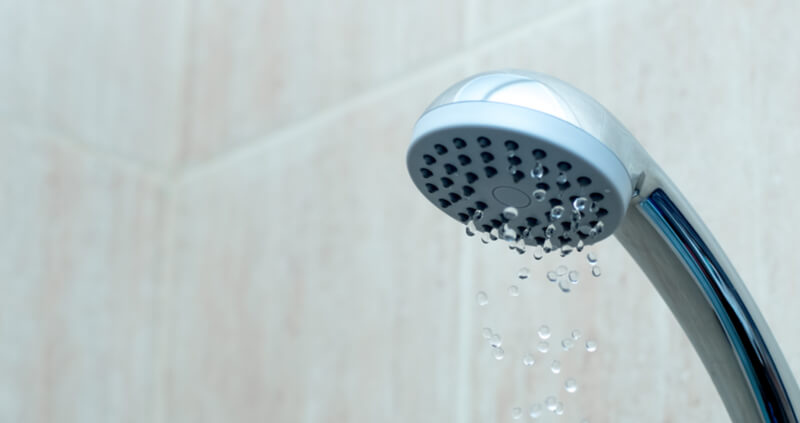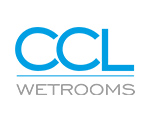
Most of us have stood under a shower with low water pressure, leaving us feeling totally dissatisfied. It’s never an enjoyable experience and rinsing off soap or even washing your hair can be a challenge when water trickles from the shower head rather than in a steady flow.
Thankfully, shower pumps provide an effective solution when low water pressure creates a negative shower experience. Shower pumps boost the water pressure in your system so that a rejuvenating shower is guaranteed any time of the day.
This guide will explain what a shower pump is, how it works, and why you may need one. It will also help identify which shower pump is best for you so that you’ll never have to endure a disappointing shower again.
Why are Shower Pumps Necessary?
There are numerous reasons why a home or building may be affected by low water pressure and require a shower pump. Anything from leaking pipes to a clogged showerhead or broken mixing valve could be to blame.
The most common explanation is that many UK homes were built before the end of the 20th Century at a time when most people bathed with a large wash basin, showers were rare, and the demand for high water pressure simply didn’t exist.
Fast forward to the 21st Century, taking a shower has become the preferred bathroom choice for most of us. A shower is quick, convenient, and generally uses less water than it takes to fill a bath. However, showers need good water pressure to operate efficiently so, if the pressure drops, you may need a water pump to maximise your shower experience.
How Do Shower Pumps Work?
Shower pumps are designed to boost the water pressure in your shower and improve your shower experience. They take both hot and cold water then increase the pressure and flow before being channelled into a showerhead.
For water to travel against gravity and upwards through the hose, it requires a good amount of water pressure. The level of pressure required to achieve this can also depend on the distance the water needs to travel from the source to the shower head.
When water pressure is low, the spray from the shower head is likely to dribble or trickle out, making showering challenging, or, at worst impossible. Thankfully, the problem can be rectified by installing a shower pump to boost the water pressure to sufficient levels, allowing it to flow freely and steadily from the shower head. This also ensures even coverage for the person taking a shower.
What are the 6 Different Types of Shower Pumps?
Water pumps for showers come in a wide range of styles, designs, and bar sizes which affect both performance and cost. It is wise to seek the advice of a qualified plumber before you choose a shower pump and go ahead and install it.
Shower pumps can be split into the following six categories:
1. Positive head shower pump
A positive head shower pump takes the water feed from a cold water storage tank and pushes it into your shower with sufficient pressure to create a steady flow of water.
This system relies on gravity to transport water from the cold water tank to the pump. The flow created sparks the impellers into action and water is circulated.
Because of the part gravity plays in this process, your cold water storage must be at least 3 feet 3 inches (900mm) above the shower head so water travels fast enough to set off the impellers.
A positive pump required a flow rate of at least 600ml per minute to kickstart the impellers and function properly.
2. Negative or universal shower pump
As there is no reliance on gravity, negative or universal shower pumps work differently as they suck water from the cold water storage tank to the shower by pressurising everything in the pipe. The system starts immediately when the shower is turned on, and this type of pump is recommended when a showerhead is higher than the cold water tank or at least the same level.
Negative or universal shower pumps are ideal for apartments, flats, loft conversions, or spaces with a flow rate of less than 600ml per minute.
3. Single impeller shower pump
These shower pumps are designed to boost one water supply only. They are mostly used for pumping hot water but are occasionally used for cold water too.
Single impeller shower pumps improve water pressure with one type of water supply. They are often used to pump the hot water side of a supply where the cold water is fed by mains pressure. Additionally, when hot and cold water tanks are in different locations, a single impeller pump may be used on each feed. To boost both types of water supply, you’ll need a twin impeller shower pump.
4. Twin impeller shower pump
The most common shower pump found in homes and buildings is the twin impeller shower pump which improves both hot and cold shower pressure and creates an equal flow of water.
These pumps work by pulling both hot and cold water into one system before boosting the pressure into the shower head. They are commonly used on positive head shower systems and should be mounted on the same level as the base of a hot water cylinder to create the desired water pressure.
5. Regenerative shower pump
This pump accepts water from the side rather than the top or bottom before the impeller forces it around and eventually to the shower head. Regenerative shower pumps are generally larger than other pumps in order to reduce noise and vibrations.
6. Centrifugal shower pump
Centrifugal shower pumps boost water pressure via impellers and then squeeze water out the other end so that it reaches the shower at a higher pressure. Centrifugal pumps are generally considered to be more efficient than regenerative pumps which could help reduce water usage and even save you money. They are also quieter when in use, making them the preferred choice where noise reduction is a key factor.
Which Shower Pump is Suitable For You?
The first thing to establish is the kind of boiler and heating system you have in your home or building. This will determine which type of shower pump works for you.
Whether you have a conventional gravity-fed system, a combi-boiler system, or an unvented system, it is important to consider the following:
- Gravity-fed systems are very common but are also renowned for low water pressure and flow. These generally consist of a cold water storage tank in the loft or roof space and a hot water tank in an airing cupboard.
- A combi, or combination, boiler acts as both a water heater and central heating boiler and is usually located on ground level. They take water from the mains pressure and transport it around a home. Unfortunately, if your home is heated by a combi boiler you will not be able to fit a shower pump because the change in water pressure could severely damage the system.
- There is no cold water tank in an unvented system. Instead, it takes water from the mains and uses a separate cylinder for hot water.
Which Type of Shower Do You Have?
Now you’ve established which boiler you have, it’s important to check the type of shower in your home. There are three main shower types in the UK and different pumps are needed to boost their performance.
Manual mixer shower
Just as it sounds, a manual mixer shower allows you to separately adjust the hot and cold water flow so you find the right temperature. Here, a twin impeller shower pump solution is generally needed to improve the flow of both hot and cold supplies.
Thermostatic mixer shower
This is also fed by both hot and cold water before a thermostatic valve monitors the water so it stays at the desired temperature. Again, a twin impeller shower pump for hot and cold is required.
Electric shower
Electric showers only take water from the cold supply which they heat inside the unit. As they are not connected to the hot water supply, a single impeller pump is required.
What Size Shower Pump Do You Need?
Several factors must be taken into consideration when selecting the size of shower pump you require. These include:
- How big is your home?
- How many showers do you have?
- How much water pressure do you need?
Answering these questions will help you choose the right shower pump so that you don’t end up with one that’s too small for the support needs of a large family.
The following information is a basic rule of thumb for shower pumps and the bar pressure required:
- Small flat: 1.5 to 2.0 bar.
- 2 Bedroom house: 2.0 to 3.0 bar.
- 3 Bedroom house: 3.0 bar.
- 4+Bedroom house: 3.6 bar.
How Do You Know If You Need a Shower Pump?
If you’re frustrated by the trickle of water that comes out of your showerhead, there’s a simple test that will determine whether you have what’s known as clinical low water pressure and if a water pump will benefit you.
The process will provide you with clear data about your water pressure and whether it’s running at 3.0 bar, 2.0 bar or even lower.
To test the water pressure in your bathroom, follow these steps:
- Find a 1-litre measuring jug.
- Place the measuring jug directly under the shower head.
- Turn the shower on and time how long it takes to fill the jug.
- If it takes longer than six seconds to fill, you have a problem with low water pressure.
Finding out if you have low water pressure couldn’t be easier and is the first step towards ensuring a better experience in the future and that every shower you take from now on is a memorable one – for all the right reasons.
Need Help Installing Your Shower Pump?
From full wetroom installations to smaller bathroom projects, CCL Wetrooms can create your dream space. Contact us today.









